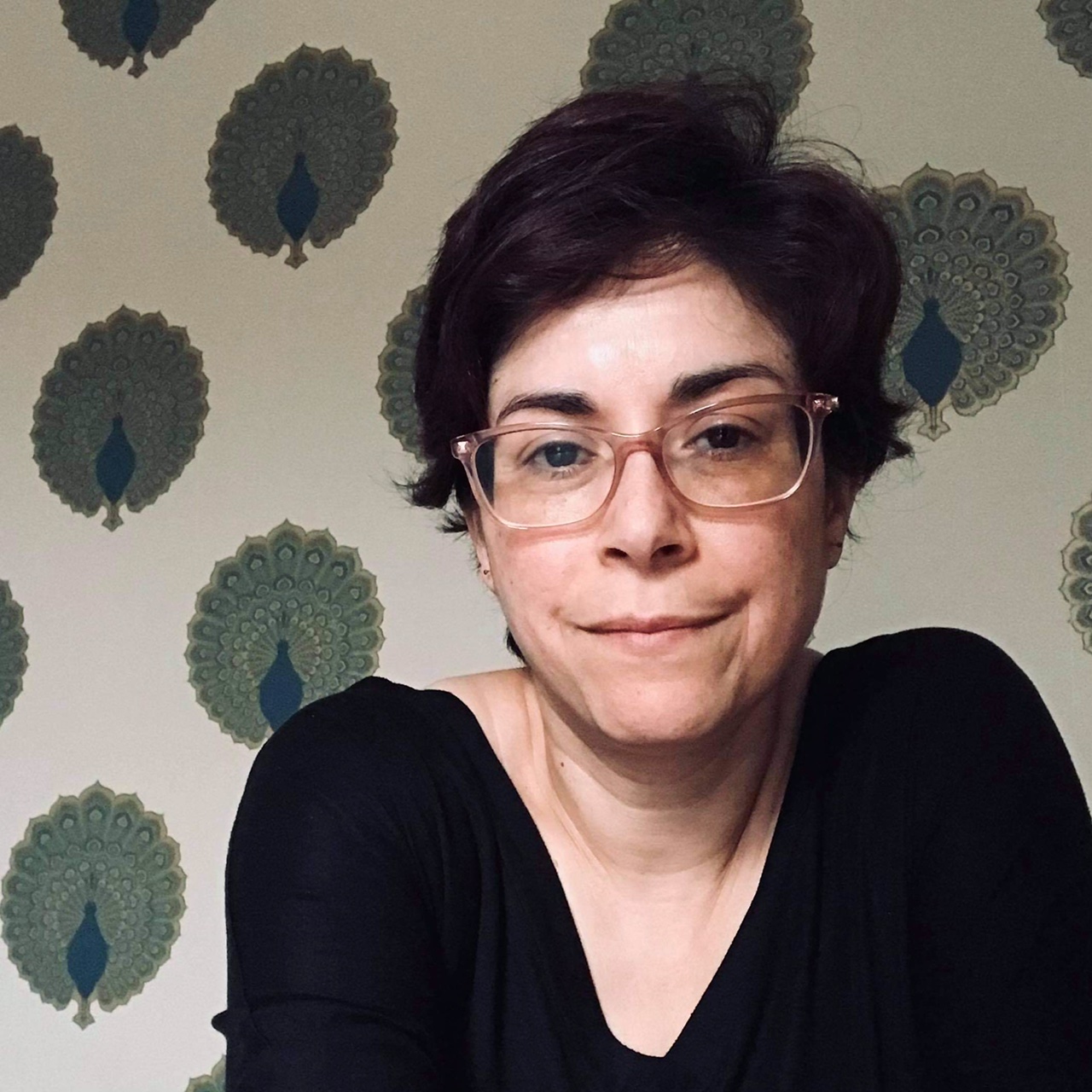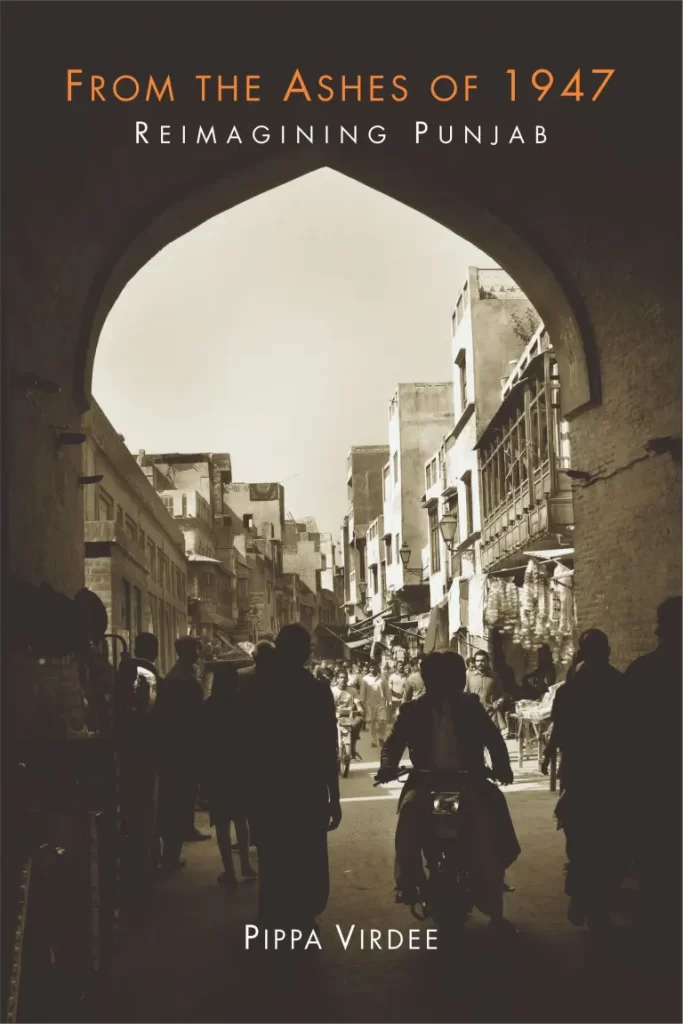The partition of British India was one of the most traumatic events of the 20th century. The chaos that followed the creation of the nations of India and Pakistan in 1947 displaced over 14 million people and claimed the lives of another 1 million. Some of the worst violence occurred in the Punjab, one the most ethnically and religiously diverse regions of British India. Yet for decades historians neglected to tell the story of those who suffered most from partition—women, members of the lower castes, and refugees. Pippa Virdee, historian and South Asian specialist from De Montfort University in the UK, has devoted much of her career to giving voice to those who were previously left out of the story of partition. She is the author of books on Pakistan, South Asian immigrants in the UK and partition in the Punjab. My interview focused on her book From the Ashes of 1947: Reimagining Punjab.
For decades historians in South Asia told the story of partition from a top-down, traditional political perspective featuring the great men of history. The first to recount the experiences of women, Dalits or untouchables, and refugees were not historians, but novelists and movie producers. While these were fictional accounts they often drew from the life experiences of their creators. For example, Khrushwant Singh’s, Train to Pakistan, written in 1956, tells the story of the village of Mano Majra plunged into the chaos of religious hatred and communal violence. The peace and serenity of Mano Majra is shattered when the first ghost train arrives in the summer of 1947 filled with the bodies of refugees massacred en route from Pakistan. It is the fear of being killed by Hindu and Sikh refugees from Pakistan that causes the Muslim residents of Mano Majra to flee to Pakistan.
When scholars finally turned their attention to the story of how partition was experienced by ordinary people, women and South Asian feminist scholars in particular, played a central role. Ritu Menon and Kamla Bhasin’s Borders and Boundaries: How Women Experienced the Partition of India, published in 1998, was one of the first feminist and social histories that put women at the center of the story of partition. Drawing from first hand accounts, memoirs, and government documents, Menon and Bashin looked at the abduction, murder, and suicides of tens of thousands of women. Urvashi Butalia’s The Other Side of Silence: Voices from the Partition of India, published in 2000, was based on ten years of oral history work among women, lower castes, and children separated from their families at the time of partition. Butalia focuses in particular on the “double dislocation” of women, abducted first from their families during partition then forcibly repatriated by their respective home government years later. Both books had a major influence on the career choices of future scholars and South Asian experts like Pippa Virdee who began her graduate work in the 2000s.
Trigger events recalling the trauma of 1947 were also important inspiring research on partition. For Urvashi Butalia it was the anti-Sikh riots that followed the assassination of Indira Gandhi that motivated her to begin her oral history work on the survivors of partition. According to Pippa Virdee, many of those interviewed by Butalia commented that 1984 was like 1947 all over again. Pippa adds that anniversaries can also serve as memory triggers. Much of the more reflexive work on 1947 began in 1997, during the 50th anniversary of partition. The ethnic cleansing that took place in the 1990s during the wars in Yugoslavia as well as the genocide in Rwanda encouraged South Asians to think about similar events in own past. For traumatic events on the scale of partition, the passage of time, Pippa stressed, is often needed to begin to address difficult memories.
Many in the past have questioned why surprisingly there has not been a meaningful partition memorial of some sort to commemorate the lives lost, those that survived and also to promote peace between India and Pakistan…Furthermore, there has been nothing in the form of public hearings to allow for stories of mass rape and murder to be made public, to allow for truth and reconciliation which has been done elsewhere. There is no form of ‘putting history on trail’. These are cathartic processes which have been completely absent in South Asia. Pippa Virdee, From the Ashes of 1947: Reimagining Punjab.
The case of the Punjab reveals the complexity of the unmixing of populations that happened during partition. Prior to partition, Muslims represented just over fifty percent of the population of the Punjab with Christians, Buddhists, Sikhs and other groups comprising the rest. But in the two towns (now cities) Pippa Virdee studied, Ludhiana (now in India) and Lyallpur (renamed Faisalabad and now in Pakistan), the populations were very different from the surrounding countryside. While in the predominantly Muslim western Punjab, Lyallpur had a majority non-Muslim population. Ludhiana, located in the mostly Hindu/Sikh region of eastern Punjab had a majority Muslim population. These once majority populations that played a central economic role in each town are now almost completely non-existent. Refugee populations from each side of the newly created border between India and Pakistan now represent the majority in each town. As the populations changed so did the cityscapes. Sikh gurdwaras or places of worship in Lyallpur were transformed into Muslim schools and mosques in Ludhiana were converted to gurdwaras.
Refugees who left their ancestral homes and businesses in the chaos of partition didn’t necessarily build their new lives on a foundation of amnesia. In her work on both sides of the border of the Punjab, Pippa Virdee finds that refugee entrepreneurs incorporated the names of their former hometowns into their new establishments. Visitors to Faisalabad (formerly Lyallpur), for example, can find stores named after Ludhiana and travelers to Ludhiana will see businesses named after Lyallpur. These place markers recall important remembered pasts and serve as familiar signposts that mitigate the trauma of beginning again in an otherwise new and foreign cityscape.
The Punjab today is a divided and communalized space. The Indian side of East Punjab is now predominantly Sikh and much smaller than in 1947 with Himachal Pradesh and Haryana split off and made into separate states. In East Punjab, Punjabi is the predominant language which is taught and preserved by schools. The history now taught in East Punjab caters to the majority population and is based largely on a Sikh narrative. In West Punjab, Punjabi doesn’t have the same cachet. This is because many of Pakistan’s elite originated in the Punjab and embraced Urdu as the national language. The majority of Punjabis in West Pakistan don’t speak Punjabi and are cut off from the history and culture associated with the language.
While the plural Punjab of the early 20th century has largely vanished, it is important not to overly romanticize this space. There were divisions in the Punjab long before partition. For instance, when Muslims would join non-Muslims for a festival or marriage, separate food would be reserved for Muslims. This was a form of othering, or thinking about Muslims as being impure. While communities of different beliefs may have coexisted peacefully, cultural elements such as food or marriage, represented prominent dividing lines which have only become more pronounced in recent times. Moreover, in such a vast area with so many diverse communities tensions inevitably flared. Even in exemplary regions such as Malerkotla, which escaped the violence of 1947, there were disturbances in the 1930s.
Given the preexistence of communal tensions, British authorities and their Indian and Pakistani counterparts, should have been better prepared for the violence of partition. However, what no-one anticipated, Pippa Virdee stresses, was the mass of people who would leave their homes for the other side of the newly created border. Most people had no idea what side of the border they would be on after independence. In the Punjab, the borders were not announced until three days after independence. While there were red flag events in the months prior to partition, it was the start of violence that triggered mass hysteria and the refugee crisis.

Pippa Virdee
Pippa Virdee is Associate Professor/Reader in Modern South Asian History at De Montfort University. She is the author of Pakistan: A Very Short Introduction, From the Ashes of 1947: Reimagining Punjab, Refugees and the End of Empire: Imperial Collapse and Forced Migration in the Twentieth Century (with P. Panayi) and Coming to Coventry: Stories from the South Asian Pioneers.


Super interview. Thank you.
The partition of 1947 of India have left wounds on the souls of the migrants. Despite the smiles those who saw the partition still carry the horrific memories. Yet at the end of the day if you think about it, was it worth it to shed blood to achieve nothing but despair disharmony and a legacy of hatred. It’s the saddest thing that happened to the mankind of this part of the world.